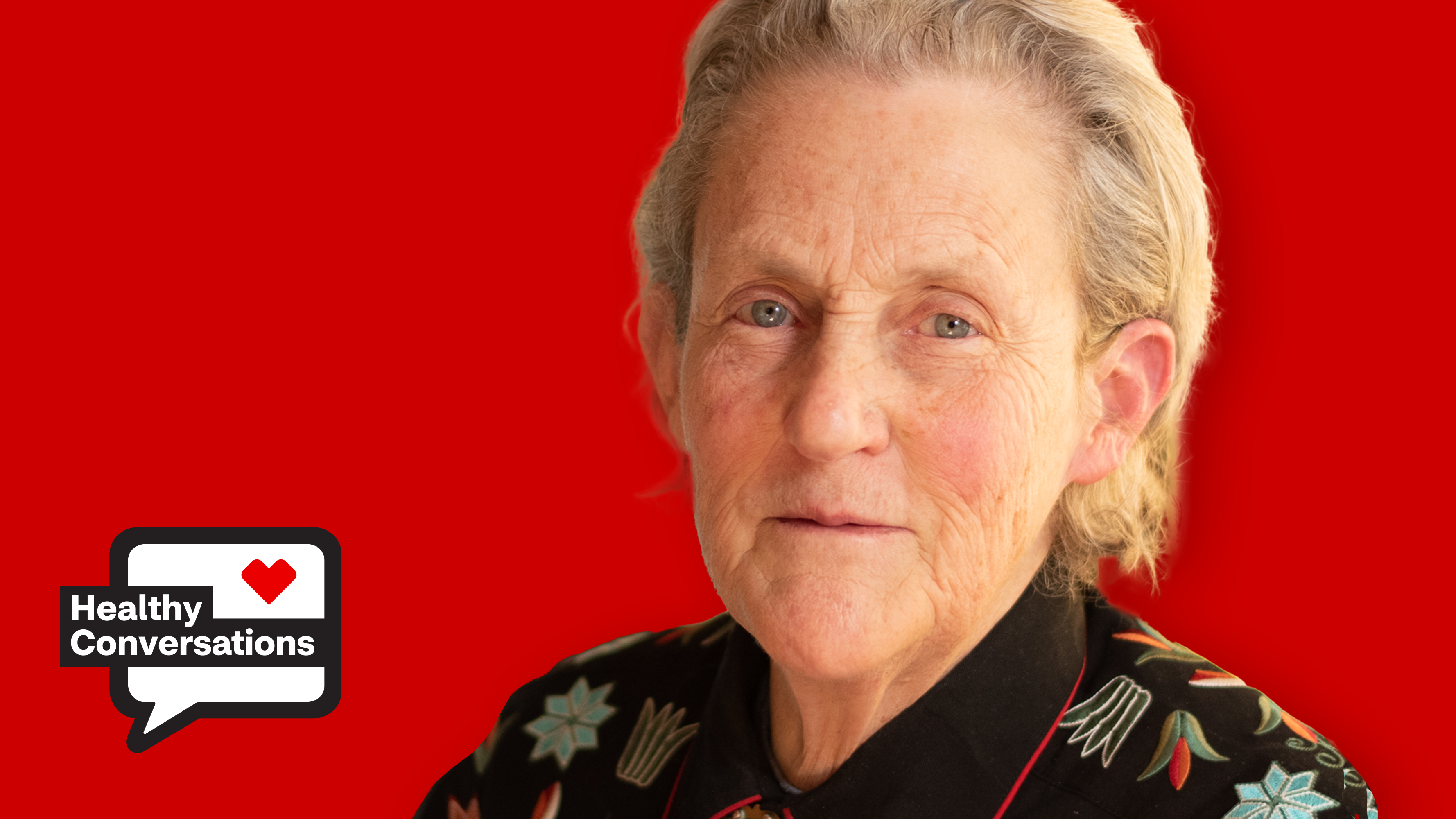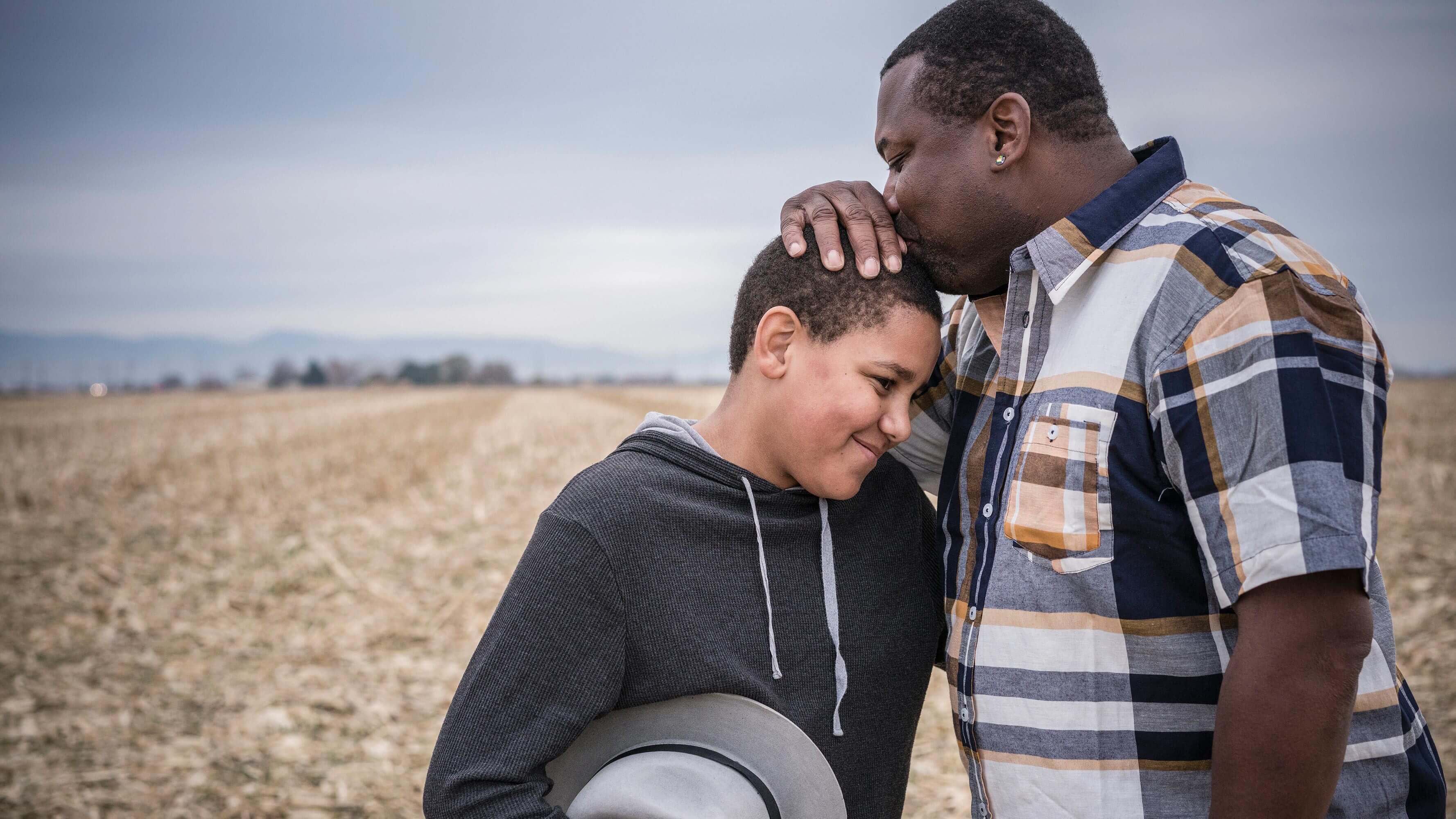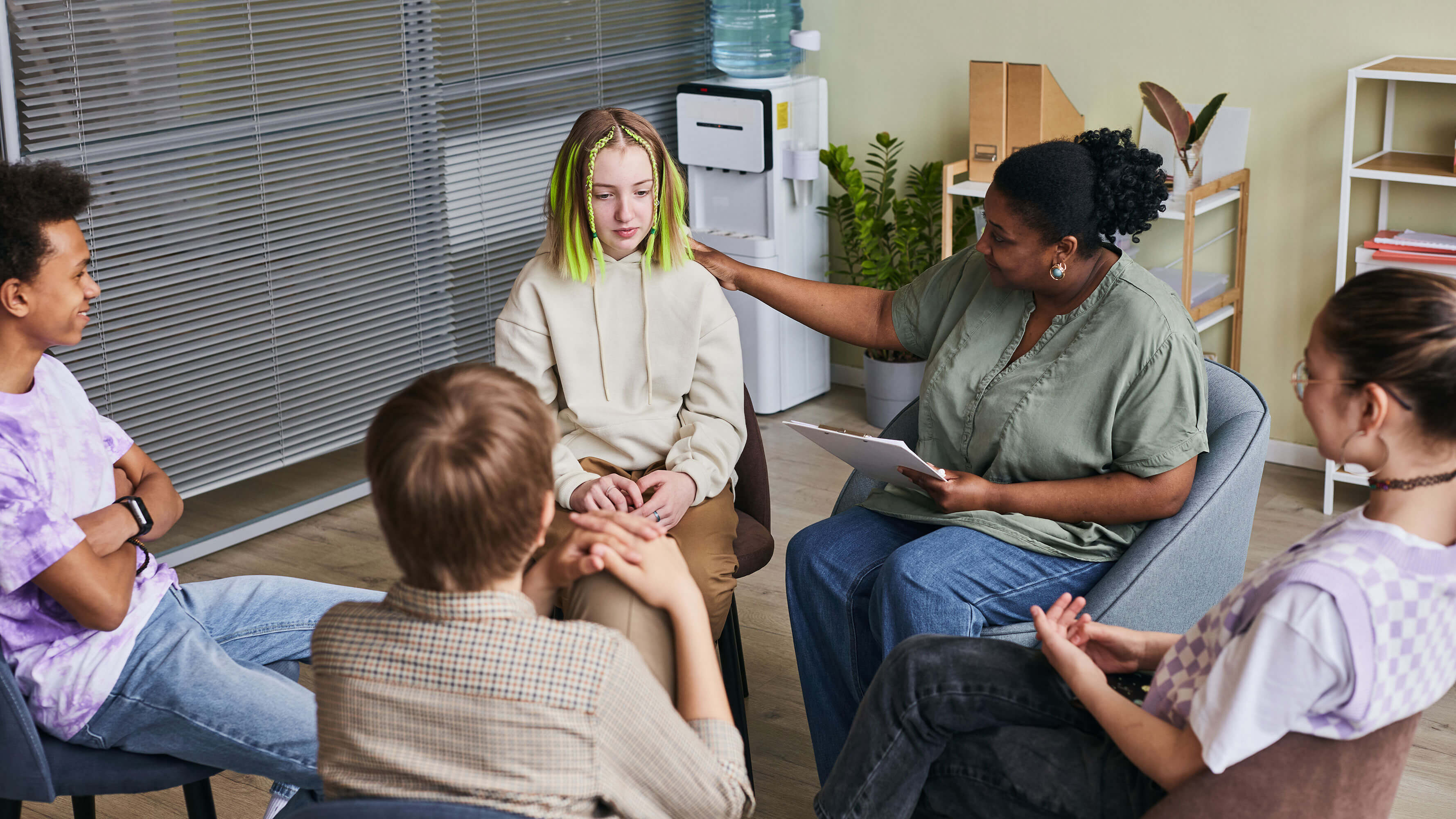TEMPLE GRANDIN:
I want to see these kids be successful, and unfortunately, a lot of people are getting too stuck in the medical model, we need to work on developing strengths. Autistic kids, autistic adults have uneven skills, we need to build up on the thing that the person's good at.
DR. DANIEL KRAFT:
Welcome to Healthy Conversations, a CVS Health original podcast, I'm Dr. Daniel Kraft. Today we're in Healthy Conversations with Temple Grandin. She's a well-known academic scientist, a real prominent proponent for humane treatment of livestock, for slaughter, the author of New York Times bestsellers including Animals in Translation, Animals Make us Human, The Autistic Brain, and Thinking in Pictures, which became an HBO movie starring Claire Danes. And I was lucky to actually hear her TED Talk in-person in 2010, The World Needs All Kinds of Minds. And today we're going to discuss a bit about her new book, Visual Thinking. So you've had an amazing career, and you've impacted many, many people. First, I wanted to talk about the concept of Visual Thinking in general, and then about how those of us in healthcare can effectively interact with those who are visual thinkers.
TEMPLE GRANDIN:
Now, I didn't know until I was late 30s that other people thought in words. Everything comes up like snapshots and little mini videos, and it was a shock for me to learn that other people were not visual thinkers. The way that I learned that other people were not visual thinkers is, when I talked to a speech therapist, and I said, "Think about a church steeple. How does that come into your mind?" The speech therapist just showed two lines, a pointy thing. It was very vaguely representational. Now, I will just see a whole series of individual churches, they are specific. So that was my first inkling that I invited the world into visual thinking and verbal thinking. And then I thought that all autistic people originally were all visual thinkers, that turned out not to be true. You have some autistic people that are object visualizers like me, thinking in photo [inaudible] pictures, horrible at abstract math, or you have the visual spatial mathematical mind who thinks in patterns, and so-called normal people. You get a lot more mixtures of different kinds of thinking.
DR. DANIEL KRAFT:
So when you mentioned normal people, our whole educational system is sort of guide to the more verbal type thinker who excels at the verbal category, and ticks tests in that way, and society sort of failing folks who are visual thinkers, and that has a big impact. Your line that I remember from your TED Talk is that if you got rid of autism genetics, or folks who are visual thinkers, there would be no Silicon Valley. How do you think not paying attention to visual thinkers is impacting society and innovation?
TEMPLE GRANDIN:
Well, I think we've got some real problems. Before COVID shut everything down, I went to two state-of-the-art pork processing plants, a state-of-the-art chicken processing plant, and I was shocked to learn that all of the specialized equipment came from Holland. And then I went to The Steve Jobs Theater, structural glass walls with a wiring hidden in it from Italy and Germany, and a carbon fiber roof from Dubai. And I stood in the middle of The Steve Jobs Theater screaming, "We don't make it anymore." I go, "We've got a skill loss issue." One of the worst things we did is taking all the hands-on classes out, because on equipment that I designed that's in all the big beef plants, it was built by people that were autistic, and they're all retiring out now, and they're not getting replaced. This is what motivated me to write this book.
DR. DANIEL KRAFT:
The systems maybe in the Netherlands still have those hands-on classes, I mean, we've sort of destroyed our arts programs, even our music in many public schools.
TEMPLE GRANDIN:
This is the problem. The educational systems in Holland, Denmark, Germany, Italy, and a lot of other European countries, when the kids are around ninth grade, they can go university route or they can go tech route, and they don't look at the tech route as something lesser. That's why they're making this fancy equipment, and we're not making it anymore. And I'm also very concerned about who's going to repair infrastructure, keep waterworks going, keep power grid stuff working, fix elevators, and I've been on some very questionable elevators recently that have not been serviced.
DR. DANIEL KRAFT:
My father and grandfather were engineers. I think I'm a bit more of a visual thinker, I never did well at algebra.
TEMPLE GRANDIN:
I've talked with a lot of photographers that would be special ed kids that did really badly in school and then they discovered cameras. And photography was the thing that saved them, because they were an extreme visual thinker.
DR. DANIEL KRAFT:
And if the mechanics sort of get knocked out of school 'cause they may not excel the normal way, they don't get up into the engineering programs?
TEMPLE GRANDIN:
Engineering programs today are very math-oriented. See, there's the mathematical side of engineering, then there's a whole shop full of people I call the clever engineers. And most of these people have not graduated from high school, but they're patenting and inventing mechanically complicated specialized equipment, and they often don't get first author on patents when they should.
DR. DANIEL KRAFT:
100%. I've worked with some brilliant medical device engineers who were definitely not the PhD route, but could build anything with their hands and their mind, and create some amazing innovations. Some folks are more visual, some are auditory, some might be more tactile. Let's say, if you were to have a write a prescription for today's public school systems, are there ways that even for the listeners here might have kids in school that they can start to instill that kind of combination of thinking?
TEMPLE GRANDIN:
I'd put all the hands-on classes back in. That's going to include cooking, sewing, woodworking, steel working, automobile shop, music, theater. Now, I didn't care about acting and plays, but I loved making costumes and scenery. I loved sewing classes when I was a child, I had a real sewing machine. These provide opportunities for these different kinds of learners to show where they excel.
DR. DANIEL KRAFT:
There you go. So many times you were described as "brain-damaged" as a child, and later, we recognize this as neurodivergent. Can you talk about neurodivergence in a broader understanding how it's changed in even your lifetime?
TEMPLE GRANDIN:
Well, basically the doctor who diagnosed me in 1949 did not know what autism was, and they tested me for two things, deafness and epilepsy, and I had no speech, and I went into a very excellent early intervention program where I was taught speech. My speech teacher would slow down when she talked to me, otherwise it sounded like gibberish. There was also a lot of emphasis on learning how to wait and take turns at games, that's a very important thing to learn. And a lot of emphasis on basic skills, eating with utensils, washing my hands, combining my hair, and I was in an excellent program by age two and a half. By four, I was talking.
DR. DANIEL KRAFT:
And clearly autism is a spectrum. I live in Silicon Valley, and there's a propensity of engineers, and there seems to be a higher propensity of children with autism.
TEMPLE GRANDIN:
Well, you have two kinds of children, you have the ones that have speech delay, and that was me, then they had Asperger's, which is socially awkward, no speech delay. Then in 2013 they merged this altogether, so now you have this huge spectrum going from a Silicon Valley computer programmer, or Einstein, he had speech delay, to somebody who remains very severe, cannot dress themselves, and may have epilepsy that's not well controlled, and it all is called the same name. I think that's a bad case of overgeneralization.
DR. DANIEL KRAFT:
Yeah, we've talked on prior episodes of Healthy Conversations about precision medicine, and identifying elements that they're genetic, or they're neurologic roots. I just had a brain MRI for a screening and a platform called Prenuvo, and I know you have as well. You had larger visual tracks that also goes with your visual thinking. And you give an example in your book of children who struggle 'cause they're visual thinkers, and I think one was named Jake, who had trouble with math, and they learned a new way to visualize math.
TEMPLE GRANDIN:
I can't do as extremely abstract stuff. Now, I can do math like [inaudible] squared for sizing pneumatic and hydraulic cylinders. Okay, and right now as I said that I'm seeing a big cylinder on an excavator machine. That's a very specific math for a very specific thing. But when it's just in the abstract, I can't remember it. Because if I can't make a graphics file, I do not remember it. But there's other things about computers I learned really well. I've been reading stuff about ChatGPT, and I know exactly how it works. It's the autistic brain, total bottom-up thinker, where you have a concept like making a classroom more inclusive, that's vague. I think of specific things.
DR. DANIEL KRAFT:
Do you think tools like ChatGPT and OpenAI, now with platforms like DALL-E where you can write a prompt and see something visually, will help both visual thinkers and verbal thinkers better become visually attuned?
TEMPLE GRANDIN:
You're not going to take an extremely verbal person and make them that visual. I think we need to have collaborations between the different kinds of thinkers. Recognize that the different kind of thinking exists, and look at where they're complementary skills. Visual thinking's very associative, it's not linear. So for example, in the HBO movie it showed all these shoes just coming up, then if I stop at one of those shoes, I'll think about where I might have worn those shoes. I remember there was a little girl's dress shoe, and I used to have to go to church wearing those, and there were scratchy petticoats. I'm now associating that type of shoe with an activity I did as a child. Or like Betsy Lerner, my co-author, the way we collaborated on this book. And so I do the rough drafts, Betsy then would smooth them all out. Working with Betsy, I learned more about how verbal thinking is different than my kind of thinking.
DR. DANIEL KRAFT:
That's a good lesson for healthcare in general. We often have certain stereotypes about certain kind of clinicians and neurosurgical type, or a psychiatrist, or a pediatrician, and it's when you combine forces to help take care of a patient, you hopefully advance the field and care.
TEMPLE GRANDIN:
Well, I think we're screening out some of the best surgeons, because some of the best surgeons are probably going to be the same people that were very good in the shop, let's say bone surgeon, that's just carpenter work basically, but the problem is, this person that might be the superb surgeon, probably won't be able to do algebra. Another thing I wrote about in the visual thinking book was a doctor that was very frustrated on teaching interns how to sew up cuts, because they'd never used needle and thread, they'd never used scissors, they hadn't done hands-on things. But the other thing that worries me is, some of the people that would actually be probably the best at practicing either human medicine or veterinary medicine are getting screened out by these really high math requirements.
DR. DANIEL KRAFT:
Yes, as someone who struggled to get through calculus, I can see the challenges that many clinicians have getting through the hoops. But now we're in this new interesting age where you can go into a headset, you can take visual journeys, you can have platforms like DALL-E create elements on the fly.
TEMPLE GRANDIN:
There's a 3D virtual reality thing they're now using for teaching veterinary students, cattle and horse anatomy, we actually got a chance to try that. It's going to replace some of the real thing, but I don't think it's going to replace all of the real thing. And I'm also very worried about things like keeping infrastructure going. I see advertisements for big fancy high buildings in New York City, and I'm going, "You're not going to want to be in that building if the water system doesn't work." When people [inaudible] say, "Everything's going to be computers." That is really wrong. It's mechanical devices controlled by computers. It's a very, very important distinction.
DR. DANIEL KRAFT:
And now it's harder to interact with mechanical devices. When I was a kid, or certainly when you were, you could get underneath the hood of your car and play with a carbonator and tweak it. Now that's all chip-controlled, and needs a special software set that only the mechanical shop has.
TEMPLE GRANDIN:
It's commercial thinking. In fact, a big controversy right now is with tractors that are electronically run, where it's commercially advantageous to these companies to keep that software all locked up and just work on it with their dealers. And a lot of farmers are very upset about this now, and they're trying to get what's called right to repair laws passed.
DR. DANIEL KRAFT:
'Cause if you can't fix it, you have to keep buying it new. And you've teased some interesting stories, one of your classics is that when you're working with livestock, and you're wondering why they might have gotten spooked, you went into the chute to see what the cattle would see, the flag that was waving that would be spooking the horses.
TEMPLE GRANDIN:
It was obvious for me to look at what they was seeing. A lot of people thought that was odd that I was getting in the chutes. But then I'd see a coat on a fence, a truck parked next to a fence, a shadow, was what I call the visual distractions, and you take those things out of a handling facility, the cattle are going to go through it a whole lot better.
DR. DANIEL KRAFT:
As you describe, your mind is sort of a Google for pictures. Now, you can access almost any picture, any video, any time. Does that change the way that you think visually? And how others can leverage visual cues to solve for problems?
TEMPLE GRANDIN:
I was a lot better solving problems at age 50 when I have a much bigger database, in other words, to use AI technology, my training data set is bigger. Because I travel to so many places, and the more information I can load into the database and associate one thing to something else, the better I get.
DR. DANIEL KRAFT:
Right, that's how you build your associative map. Sometimes when I meet somebody, I will remember exactly where I saw them, and where I was physically in space, I'm more of a spatial thinker. I like to connect the dots, and technology, and healthcare, and concepts to help think about the future of medicine. Mind maps is one tool. Would you have some sort of suggestions about how to build that future that better integrates in visual thinking, whether it's healthcare or for young kids?
TEMPLE GRANDIN:
I'm going to put all the hands-on classes back in the schools we had in the '50s, that's what I do. And then the kids like me in a drawing class, or an art class, so they excel there, or the people that built my equipment, they took a single welding class that started their career. You don't know what you're going to be good at, and what you're going to be hate and be bad at unless you try a whole lot of different stuff.
DR. DANIEL KRAFT:
Right, and try different even mindsets. My six and eight year old boys watch this former NASA engineer named Mark Rober, who's a bit of a YouTube star who talks about thinking like an engineer, and actually sends out these kits every month, they get one and get to build some sort of engineering concept. We'll see if they turn into engineers or not, but at least gives them that sort of thinking like an engineer. Maybe we can close it with a little bit about your amazing advocacy for the autism community, and for the healthcare professionals who are listening. What are you seeing as the still the unmet needs, the pain points, and what needs to be solved for?
TEMPLE GRANDIN:
We need to work on developing strengths. Autistic kids, autistic adults have uneven skills. We need to build up on the thing that the person's good at. Now, we're doing a good job today with early intervention for the really little kids, but where we're not doing such a good job is the transition to the world of work. I want to see these kids be successful, and unfortunately, a lot of people are getting too stuck in the medical model, and they don't think the kid can do anything. There's too much getting stuck on the label. You see, a lot of the people I worked with that owned shops, they weren't formally diagnosed, but some of them were very autistic, very successful businesses.
DR. DANIEL KRAFT:
Connect the dots. Well, I really want to thank you for connecting the dots for me and the audience, and your incredible work in the Visual Thinking book. It's been a real honor and pleasure to have you on Healthy Conversations.
TEMPLE GRANDIN:
It was great to be here, and thank you so much for having me.



